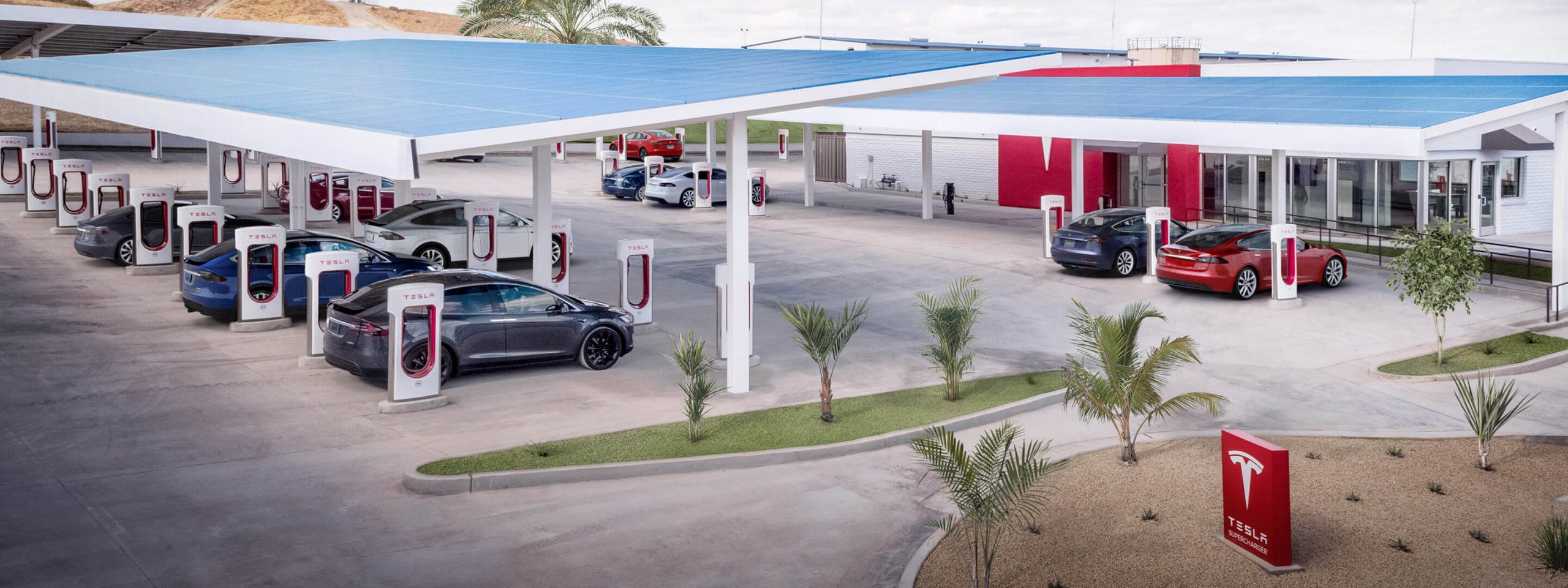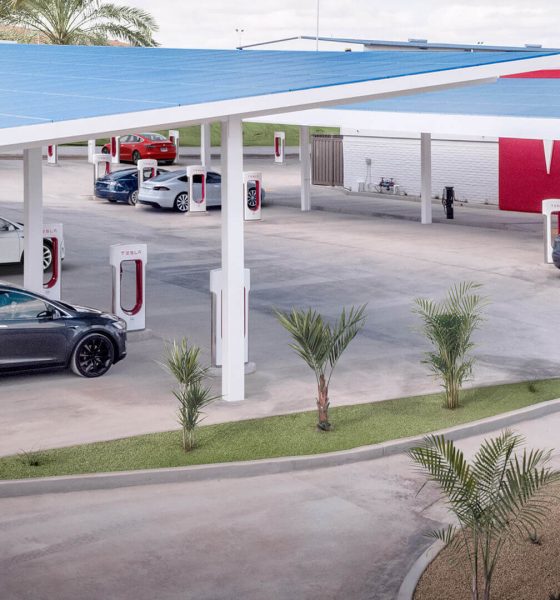One of the most notable portions, for electric vehicle drivers at least, of President Joe Biden’s Build Back Better plan is the introduction of a massive $12,500 EV tax credit that will be offered to those who choose to drive sustainable cars. Now, new language revisions in the bill could see the EV tax credit turn into a “refundable credit,” which would give those who drive EVs an opportunity to receive a refund check that would put cash in their pockets.
Following Teslarati’s report on the EV Tax Credit portion of the Build Back Better plan over the weekend, the language in the proposal has been revised to reflect a refundable tax credit scenario for those who purchase EVs. Previously, the tax credit was used precisely as a “credit” would work. If a U.S. tax filer owed money on their taxes but bought an EV, the credit would eliminate the balance the filer owes on their taxes but would not put money in the filer’s pocket directly.
U.S. Senate Panel looks to boost EV Tax Credit to $12,500: What we know so far
Now, this may change, as the new language in the bill states that the credit would now be able to be obtained by the filer. The excess credit would then be converted into a check and sent to the filer, putting the amount in the EV driver’s pocket. Previously, if someone owed $2,500 in taxes and bought an EV that offered a $7,500 tax credit, it would eliminate the $2,500 balance, but the remaining funds would not be given to the driver. Instead, the additional funds would be returned to the government.
The new language would change the scenario completely. If someone owes $2,500 in taxes and bought an EV that offers a $7,500 tax credit, the $2,500 balance would be eliminated, and the remaining $5,000 would be sent to the driver in a check. CNET first reported the changes.
The advantages of an actual refundable credit could bring more effectiveness to the EV tax credit program altogether. Instead of people losing out on the remaining credit that is returned back to the government following their tax balance being eliminated, they will now be able to put the remaining funds back into their pocket, which could lead to several advantages for the car buyer. They could use the credit to install a home charger or put the entire balance toward their car loan.
Additionally, language would now give disqualified automakers, like Tesla and GM, who have sold 200,000 EVs and cannot offer the credit, the opportunity to provide the refundable tax credit for up to five years. After the first five years, the credit will only be available to use by EVs that are manufactured in the United States. Currently, the language regarding vehicle type price caps, which applies to SUVs, Trucks, and Vans up to $80,000 and “other,” which includes sedans, sits at $55,000 and under, still is present in the bill.
Income limits have been lowered to $500,000 for joint families, $375,000 for the head of household, and $250,000 for individual filers. These are relatively drastic reductions, especially as single filers were eligible with incomes of up to $400,000, and joint filers were not disqualified until the $800,000 yearly income mark.
Finally, used EVs will now qualify if the vehicle is at least two years old, costs under $25,000, and the household has an income of less than $75,000 for single filers and $150,000 for joint filers.
I’d love to hear from you! If you have any comments, concerns, or questions, please email me at joey@teslarati.com. You can also reach me on Twitter @KlenderJoey, or if you have news tips, you can email us at tips@teslarati.com.

News
Tesla FSD fleet is nearing 7 billion total miles, including 2.5 billion city miles
As can be seen on Tesla’s official FSD webpage, vehicles equipped with the system have now navigated over 6.99 billion miles.

Tesla’s Full Self-Driving (Supervised) fleet is closing in on almost 7 billion total miles driven, as per data posted by the company on its official FSD webpage.
These figures hint at the massive scale of data fueling Tesla’s rapid FSD improvements, which have been quite notable as of late.
FSD mileage milestones
As can be seen on Tesla’s official FSD webpage, vehicles equipped with the system have now navigated over 6.99 billion miles. Tesla owner and avid FSD tester Whole Mars Catalog also shared a screenshot indicating that from the nearly 7 billion miles traveled by the FSD fleet, more than 2.5 billion miles were driven inside cities.
City miles are particularly valuable for complex urban scenarios like unprotected turns, pedestrian interactions, and traffic lights. This is also the difference-maker for FSD, as only complex solutions, such as Waymo’s self-driving taxis, operate similarly on inner-city streets. And even then, incidents such as the San Francisco blackouts have proven challenging for sensor-rich vehicles like Waymos.
Tesla’s data edge
Tesla has a number of advantages in the autonomous vehicle sector, one of which is the size of its fleet and the number of vehicles training FSD on real-world roads. Tesla’s nearly 7 billion FSD miles then allow the company to roll out updates that make its vehicles behave like they are being driven by experienced drivers, even if they are operating on their own.
So notable are Tesla’s improvements to FSD that NVIDIA Director of Robotics Jim Fan, after experiencing FSD v14, noted that the system is the first AI that passes what he described as a “Physical Turing Test.”
“Despite knowing exactly how robot learning works, I still find it magical watching the steering wheel turn by itself. First it feels surreal, next it becomes routine. Then, like the smartphone, taking it away actively hurts. This is how humanity gets rewired and glued to god-like technologies,” Fan wrote in a post on X.
News
Tesla starts showing how FSD will change lives in Europe
Local officials tested the system on narrow country roads and were impressed by FSD’s smooth, human-like driving, with some calling the service a game-changer for everyday life in areas that are far from urban centers.

Tesla has launched Europe’s first public shuttle service using Full Self-Driving (Supervised) in the rural Eifelkreis Bitburg-Prüm region of Germany, demonstrating how the technology can restore independence and mobility for people who struggle with limited transport options.
Local officials tested the system on narrow country roads and were impressed by FSD’s smooth, human-like driving, with some calling the service a game-changer for everyday life in areas that are far from urban centers.
Officials see real impact on rural residents
Arzfeld Mayor Johannes Kuhl and District Administrator Andreas Kruppert personally tested the Tesla shuttle service. This allowed them to see just how well FSD navigated winding lanes and rural roads confidently. Kruppert said, “Autonomous driving sounds like science fiction to many, but we simply see here that it works totally well in rural regions too.” Kuhl, for his part, also noted that FSD “feels like a very experienced driver.”
The pilot complements the area’s “Citizen Bus” program, which provides on-demand rides for elderly residents who can no longer drive themselves. Tesla Europe shared a video of a demonstration of the service, highlighting how FSD gives people their freedom back, even in places where public transport is not as prevalent.
What the Ministry for Economic Affairs and Transport says
Rhineland-Palatinate’s Minister Daniela Schmitt supported the project, praising the collaboration that made this “first of its kind in Europe” possible. As per the ministry, the rural rollout for the service shows FSD’s potential beyond major cities, and it delivers tangible benefits like grocery runs, doctor visits, and social connections for isolated residents.
“Reliable and flexible mobility is especially vital in rural areas. With the launch of a shuttle service using self-driving vehicles (FSD supervised) by Tesla in the Eifelkreis Bitburg-Prüm, an innovative pilot project is now getting underway that complements local community bus services. It is the first project of its kind in Europe.
“The result is a real gain for rural mobility: greater accessibility, more flexibility and tangible benefits for everyday life. A strong signal for innovation, cooperation and future-oriented mobility beyond urban centers,” the ministry wrote in a LinkedIn post.
News
Tesla China quietly posts Robotaxi-related job listing
Tesla China is currently seeking a Low Voltage Electrical Engineer to work on circuit board design for the company’s autonomous vehicles.

Tesla has posted a new job listing in Shanghai explicitly tied to its Robotaxi program, fueling speculation that the company is preparing to launch its dedicated autonomous ride-hailing service in China.
As noted in the listing, Tesla China is currently seeking a Low Voltage Electrical Engineer to work on circuit board design for the company’s autonomous vehicles.
Robotaxi-specific role
The listing, which was shared on social media platform X by industry watcher @tslaming, suggested that Tesla China is looking to fill the role urgently. The job listing itself specifically mentions that the person hired for the role will be working on the Low Voltage Hardware team, which would design the circuit boards that would serve as the nervous system of the Robotaxi.
Key tasks for the role, as indicated in the job listing, include collaboration with PCB layout, firmware, mechanical, program management, and validation teams, among other responsibilities. The role is based in Shanghai.
China Robotaxi launch
China represents a massive potential market for robotaxis, with its dense urban centers and supportive policies in select cities. Tesla has limited permission to roll out FSD in the country, though despite this, its vehicles have been hailed as among the best in the market when it comes to autonomous features. So far, at least, it appears that China supports Tesla’s FSD and Robotaxi rollout.
This was hinted at in November, when Tesla brought the Cybercab to the 8th China International Import Expo (CIIE) in Shanghai, marking the first time that the autonomous two-seater was brought to the Asia-Pacific region. The vehicle, despite not having a release date in China, received a significant amount of interest among the event’s attendees.










